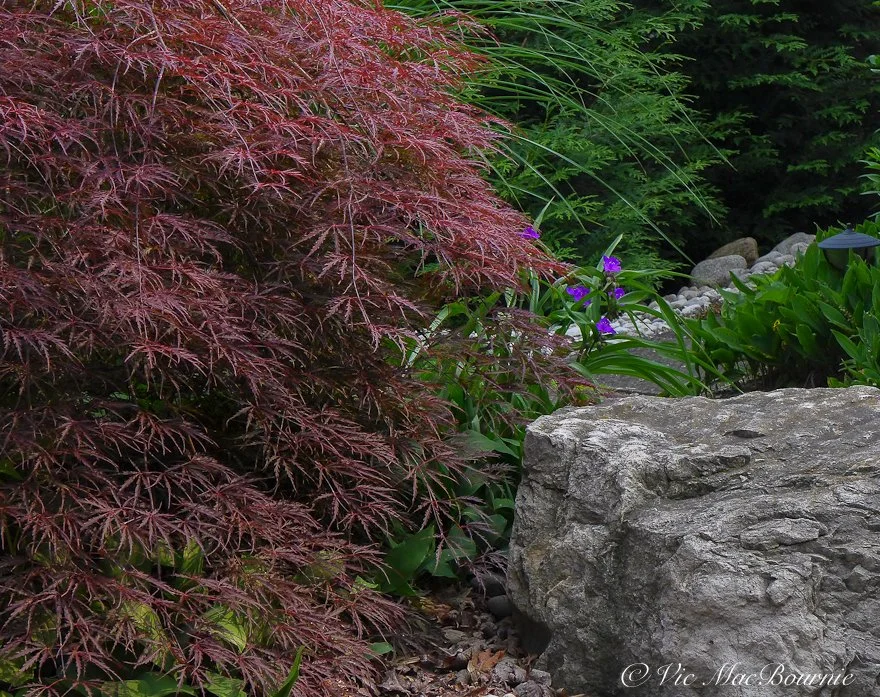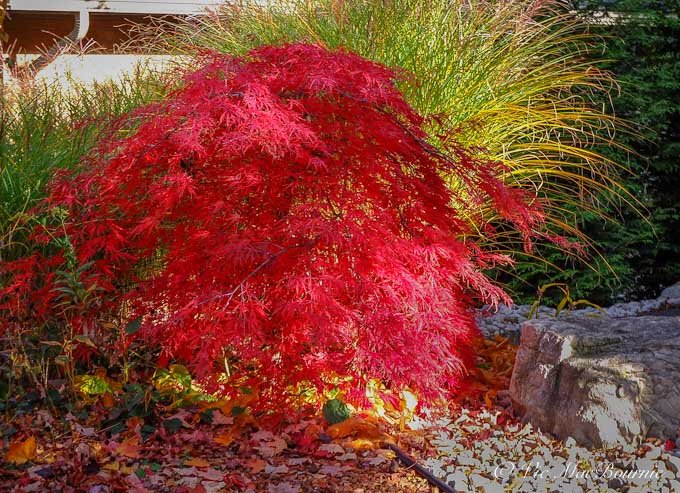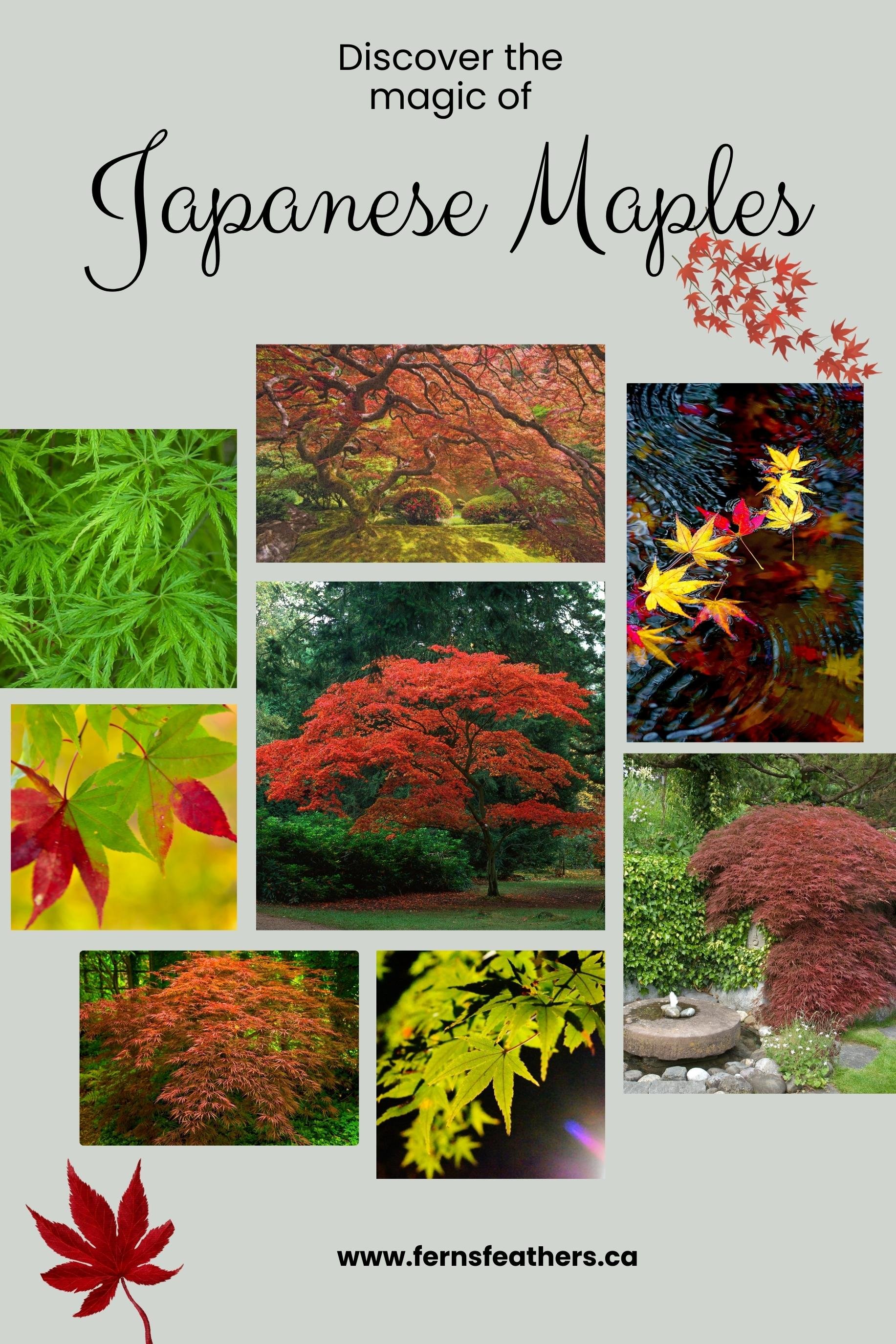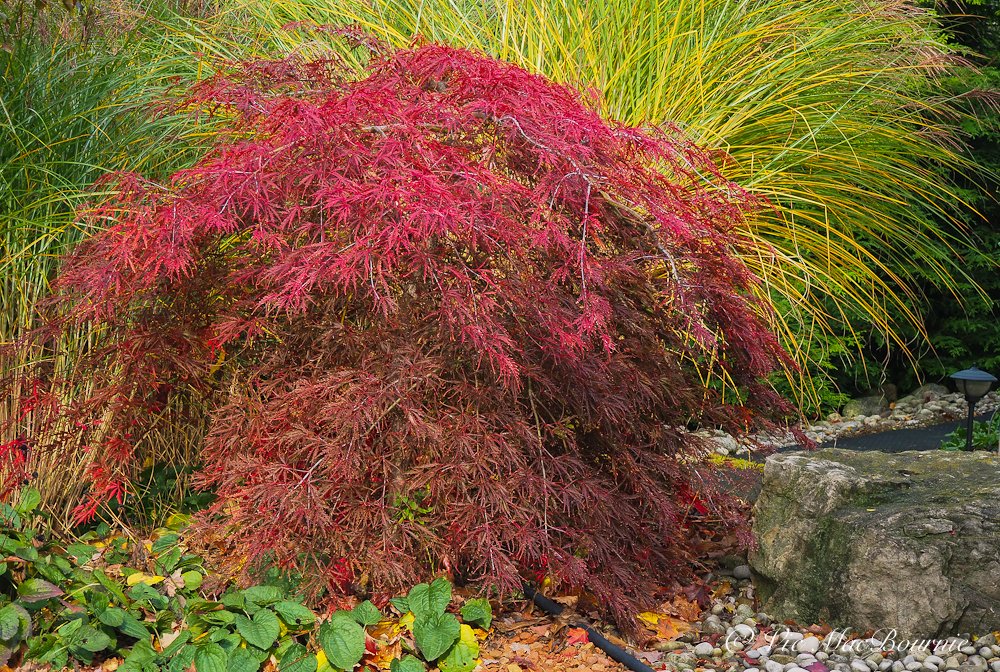Weeping Japanese Maple: Perfect for a small space
Our weeping Japanese Maple may not be very large, but it’s a big performer in the Japanese-inspired garden where it anchors one side of the garden with its delicate branches softening the hard edge of a giant boulder.
Its unusual form and dark red foliage makes a bold statement despite its rather demure size.
In fact, you would be hard pressed to find a better tree for that location in our Japanese-inspired garden.
Let’s take a closer look at weeping Japanese Maples with any eye on how to get the most out of these small-growing trees.
How big does a weeping Japanese maple get?
All Japanese Maples should be grown as understory trees, meaning they are generally smaller trees meant to grow in the shade of larger trees or buildings that protect them from harsh weather, especially extreme sun and heat.
Most weeping forms of Japanese Maple are dwarf, cutleaf varieties meaning that they are not only smaller than a regular, say Bloodgood variety, but are more susceptible to harsh conditions.
Interested in Japanese Maples. For more information be sure to read my other posts here:
The typical weeping Japanese Maple will grow to about 8 feet with a similar width, but I have found the weeping Japanese Maples grow at a particularly slow pace.
While a traditional Japanese Maple can grow one to two feet a year, the weeping Japanese Maple will put on growth much more slowly. Be prepared for a vertical growth rate of just a few inches per year.
You can expect the average dwarf, weeping Japanese Maple to reach between 4-5 feet over a ten-year period making them ideal small trees for small yards or areas in the garden where you are looking for a tree to provide a spot of color without ever dominating its planting space.
Which Japanese maples are the weeping variety?
There are many varieties of weeping Japanese Maples to choose from including:
• Acer Palmatum Dissectum ‘Inaba Shidare.’ This red to maroon weeping maple grows to about 5 feet with a six foot width and sports bright red fall colour. This laceleaf, pendulous tree is very hardy and is able to adapt to most situations, including sunnier areas. Three to four hours of sun helps the tree keep its best color. It can be grown in containers and is hardy in zones 5-9.
• Acer Palmatum Dissectum ‘Waterfall.’ This weeping maple leaves emerge an almost neon green in spring turning a golden yellow to orange into fall. It grows to about 5 ft by 6 ft in about ten years and is hardy in zones 5 through 9.
• Acer Palmatum Dissectum ‘Orangeola.’ Leaves emerge in spring in various shades of red, orange and green helping to give the tree an interesting look. This multi-colored pendulous dissectum acer is considered one of the most cascading Japanese maples. The leaves turn an orange red in fall and the tree is a little more compact than others reaching only about 4 ft tall with a width of about 5 ft over the course of ten years. It is hardy to zones 5 through 9 and can be grown as a container plant.
How to care for a weeping Japanese maples? Are they hardy?
Weeping Japanese maple are hardy trees (zones 5-9) that do not require a high degree of special care.
Although they benefit from some sun, they are meant to be understory trees and, therefore, benefit from being in the shade for the sunniest and hottest parts of the day.
Some varieties may have better color if exposed to short periods of sun.
Besides adequate water and mindful pruning, these small trees require little maintenance.
How to prune weeping Japanese Maples?
Please use restraint when pruning your weeping Japanese maples and do not remove the lower half of the trees to create umbrella-looking trees in the landscape.
Japanese Maples have inherent beauty and unlike, say a weeping Catalpa tree, do not benefit from harsh pruning. I have seen Japanese Maples that are pruned into odd umbrella-looking trees that look out of place in the garden. Maybe the owners wanted to plant flowers under the trees or just didn’t think the pendulous branches would benefit from touching the ground.
Try to refrain from severely pruning these trees in such a manner. Embrace their inherent pendulous habit and let them reach their full beauty. Feel free to trim them up off the ground if you feel you must, but I have never pruned the bottom of our weeping tree and don’t intend to in the near future.




